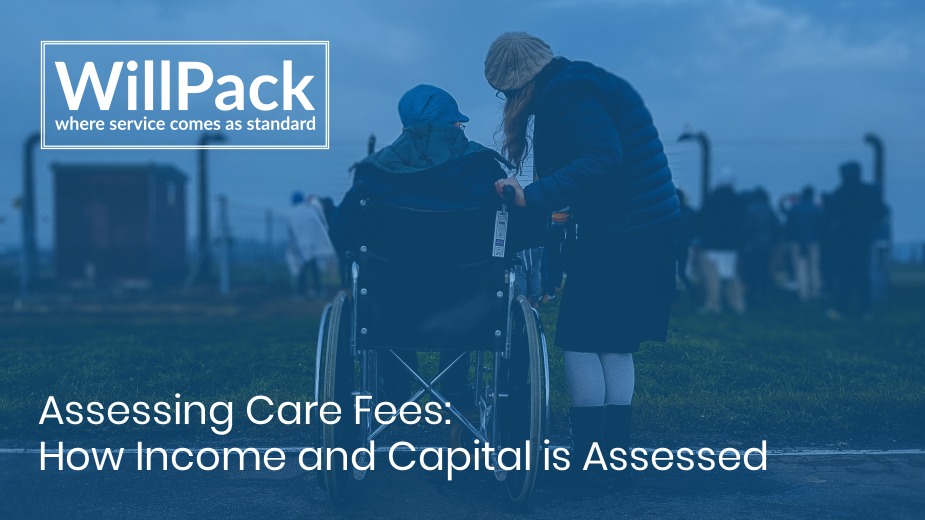If a person goes into residential care, their local authority will need to carry out a financial assessment to determine how much that person can contribute towards their care home fees. This is known as the means test. Both the income and capital of the person will be considered by the local authority, although there are a number of assets that will not be disregarded. This article will cover what income and capital local authorities will consider when assessing care fees. What capital is disregarded will be considered in a later article.
Treatment of capital for the financial assessment
If a person has capital over £23,250, they will be expected to pay the all care fees themselves. This is known as self-funding. If capital ever reduces below £23,250 the local authority will then assist with funding.
Whilst a person has capital between £14,250 and £23,250, they are treated as if they have an extra income. For every £250 or part of £250 above £14,250, they are treated as being able to contribute an extra £1 a week income towards their care costs.
If a person has capital below £14,250, capital is fully disregarded when considering if a person should pay for their own care.
Most forms of capital are included in the financial assessment, including a person’s savings, bank or building society accounts, premium bonds, stocks and shares, and property. When considering the value of an asset, any secured debts (e.g. a mortgage) are deducted from its value. 10% of an asset’s value may also be deducted for the purpose of the assessment if there will be expenses incurred to realise the asset.
A person may be treated as having capital even though they do not have access to it. This could be funds available on request such as unclaimed premium bonds or capital disposed of to avoid paying care fees. This is known as having notional capital.
Treatment of income for the financial assessment
Any income received will be included in the financial assessment and is usually considered on a weekly basis and taken into account in full (although there are some exceptions to this).
If a person’s weekly income exceeds the cost of the weekly care costs they will be considered a self-funder. However, the local authority must allow them to keep a personal expenses allowance of £24.90 that cannot be used towards the cost of care and is reserved for personal use. Local authorities has a discretionary power to increase the personal expenses allowance.
Local authorities will calculate income received on the basis that all benefit income is being claimed even if the person is not currently claiming those benefits.
Certain income, such as the mobility components of disability living allowance or personal independence payment, certain damage, war widows’ special payments are fully disregarded when considering income. Certain other income is partly disregarded, such as £10 a week of a war widow’s, war widower’s/war disablement pension.
Example of assessing care fees
A person has £15,100 in capital, receives an income of £200 per week and their expected care costs are £700 per week.
As the person has capital between £14,250 and £23,250 there are therefore treated as having additional income. As this is three full £250 and one part £250 above £14,250, they are treated as having an additional £4 per week income.
| Income | 200 |
| Tariff income | + 4 |
| Personal expenses allowance | – 24.90 |
| Total | 179.10 |
| Care Costs | 700 |
| Contribution | 179.10 |
| Local authority’s contribution | 520.90 |
The person would therefore need to fund £179.10 of their care. The remaining £520.90 will be funded by the local authority.


 © Trust Wills & Probate Limited t/a WillPack. All rights reserved.
© Trust Wills & Probate Limited t/a WillPack. All rights reserved.
One comment
Pingback: Assessing Care Fees: Disregarded Capital — WillPack
Comments are closed.